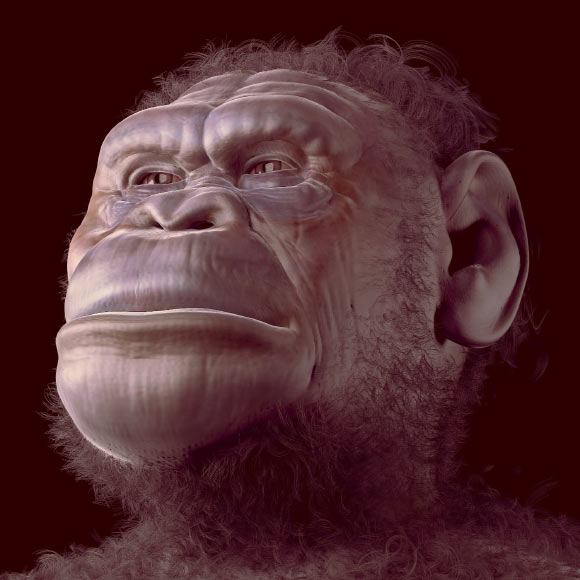An international team of paleoanthropologists has found that the hand of Australopithecus sediba, a small hominin that lived about 2 million years ago in what is now South Africa, was used for both human-like manipulation as well as branch grasping, and that this hand use is distinct from other fossil hominins, including Australopithecus afarensis and Australopithecus africanus.
The human lineage can be defined by a transition in hand use. The forceful precision grips used by modern humans probably evolved in the context of stone tool manufacture and use, but when and how many times hominin hands became principally manipulative remains unresolved.
“Internal bone structures are shaped by frequent behaviors during life,” said lead author Dr. Christopher Dunmore, a researcher in the Skeletal Biology Research Centre in the School of Anthropology and Conservation at the University of Kent.
Dr. Dunmore and colleagues analyzed the internal bony structures of fossil knuckle and thumb joints from the hands of Australopithecus sediba as well as other hominins, including Australopithecus africanus, Australopithecus afarensis, Homo neanderthalensis, and Homo sapiens.
The knuckles at the base of Australopithecus sediba’s fingers were found to have an internal trabecular structure consistent with branch grasping, but that of their thumb joints is consistent with human-like manipulation.
This unique combination is different to that found in other Australopithecus species studied and provides direct evidence that ape-like features of this species were actually used, probably during climbing.
Furthermore, it supports the idea that the transition to walking on two legs was gradual in this late surviving member of the Australopithecus genus.
“Our findings can support further research into the internal structure of hands in relation to stone tool use and production,” Dr. Dunmore said.
“This approach may also be used to investigate how other fossil hominin species moved around and to what degree climbing might have remained an important part of their lifestyle.”
“The internal bone structure can reveal hidden evidence that gives us insight into how our fossil human relatives behaved,” added Professor Tracy Kivell, from the Skeletal Biology Research Centre in the School of Anthropology and Conservation at the University of Kent, the Department of Human Evolution at the Max Planck Institute for Evolutionary Anthropology, and the Evolutionary Studies Institute at the University of the Witwatersrand.
“We were really excited to see this particular hand-use pattern in Australopithecus sediba as it was so different from other australopiths.”
“The fossil record is revealing more and more diversity in the ways our ancestors moved around, and interacted with, their environments — the human evolutionary story is even more complex and interesting than we previously thought.”
The research is described in the journal Nature Ecology & Evolution.
_____
C.J. Dunmore et al. The position of Australopithecus sediba within fossil hominin hand use diversity. Nat Ecol Evol, published online May 18, 2020; doi: 10.1038/s41559-020-1207-5








